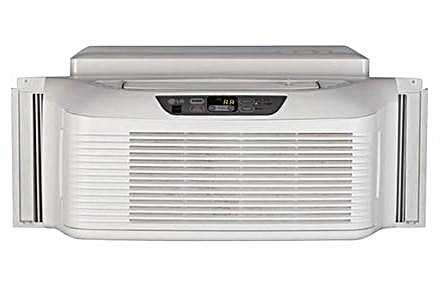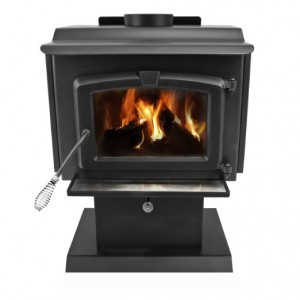Warming Your Tiny Home – What Are the Best Tiny House Heaters?
Living in a tiny house doesn’t automatically exempt you from the same concerns that face any other homeowner. You still have dishes to wash. Laundry still piles up. The floor still needs to be swept and mopped. You still need to heat your home, as well. If you’re struggling with the question of how to keep your tiny home comfortable during the cold months of the year, there are plenty of choices out there. They range from mini split systems to combo window units and standalone units, but which are the best tiny house heaters on the market? It can be confusing to find the right solution to your needs, but the following guide will help you make sense of the options.
This might sound like a strange HVAC system at first glance, but the basic concepts should be familiar to anyone who has ever owned a home with central heating and air. It’s essentially shrunk down version made to fit a smaller home rather than a larger, conventional home.
A mini split system relies on the same basic components as a central HVAC system, minus the ductwork. You’ll have an evaporator and an air handler unit. The evaporator is mounted outside the home. The tongue is the most common place for installation, but some homes are designed to have them mounted at the rear (they cannot be installed on the sides if the home will be mobile). The evaporator is connected through the wall to the interior air handler, which is where you’ll find your temperature controls, on/off switch and other functions.
There are a few caveats to using a mini split system. While these are certainly the most efficient option, they must be installed by a licensed HVAC technician. That automatically ups your cost if you’re doing this on your own (rather than buying a pre-built tiny home from one of the many companies out there). You also need to ensure that you choose the right model. Most mini split systems run on 240 volts, which requires special wiring. However, there are a few 120-volt systems on the market. You’ll just have to do some digging to find them. You’ll also need to ensure that you get the right BTU rating (9,000 BTUs is about the minimum, and should be sufficient for a tiny house up to about 500 square feet, but always check the manufacturer’s ratings and recommendations).
Finally, most mini split systems draw too much power to be truly feasible in an off-grid setting. A single speed unit will draw somewhere around 1,200 watts. A multi-speed unit can draw up to 400 watts on low, which is more feasible, but might not heat your home enough if you live in a very cold climate and/or the home is not correctly insulated.
Chances are good that unless you live in a northern climate, you’ll need both heating and air conditioning. You can solve both problems with a combo window unit. These come in a range of heating and cooling capacities, and install just like a standard window unit. When the weather turns cold, you simply switch to the heating feature of the unit. It’s really that simple. Everything’s contained in the same box, and there’s very little maintenance to worry about. You also don’t have to worry about having the unit installed by an HVAC professional.
As with mini split systems, there are a few considerations here. First, window units are not as efficient as other options (particularly a mini split). Second, most combo units require 240 volts of power, which means you’ll have to accommodate those needs during the build with specific wiring (and a separate breaker in the fuse box for the unit). There are 120-volt units on the market, but they tend to be smaller, and less widely available, so plan on a lengthy search if this is your choice.
Another consideration here is that a window unit (whether a single AC system or a combo heat and AC) is not the most efficient solution available in terms of insulation. While they can be modified with a little creativity, most of these units still rely on the accordion plastic partition to separate the indoors from the outdoors. That will allow cold air into the home, causing the unit to run more often than would be necessary with a different type of heating system.
The above picture is a through the wall installation kit. “Through the wall” systems are not much different from window units, and you’ll find heaters, combo heat and air, and air conditioning systems available in this category. They share all the same considerations as combo window units discussed above, but they have one additional factor that you should know. Because they’re installed in the wall itself, they’re best installed during the build. They can be installed afterward, but this will require cutting through the interior wall, as well as the insulation and the exterior siding. Ideal placement may be compromised due to the installation of structural supports for the home as well.
Infrared Portable Space Heaters
Space heaters might not sound like the ideal solution for heating an entire home, but when you live in a tiny house, they suddenly become very promising. Of course, there are many different types of space heaters out there, including propane, kerosene, and electric. Of the many options, electric is the better choice (less risk of fire, and they can be operated on a solar system if need be). Infrared heaters like the Dr. Infrared Heater™ can provide all the heat you need for your entire home, and offer advanced functionality, like a wider range of temperature control (50 to 85 degrees with the Dr. Heater model, plus it features a thermostat so it cycles on and off as needed). The biggest problem with a space heater is that it isn’t likely to be cost effective if you use it much. We do not recommend going with the space heater option if you live in a cold climate.
Wood burning stoves can be a great option if your tiny house is going to be off the grid. The heat can also be extremely cost effective if you are going to live on land where trees tend to fall anyway. I personally love the rustic, throwback nature of having a wood burning stove in a tiny house. One of the biggest downsides can be space. Make sure you pay close attention to the dimensions before buying any wood burning stove. They can be monsters in a small floor plan.
These are some of the best tiny house heaters on the market, but there are many others. Quite a few owners choose to go with a wood-fired stove to ensure they can be completely off the grid. With a little careful consideration, you’ll find the perfect option to keep you warm and toasty.




